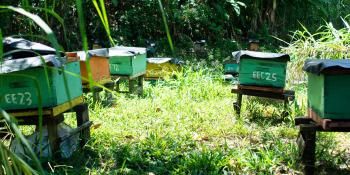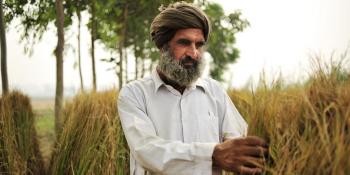New Working Paper helps to map the world of economic models

CCAFS releases new Working Paper: Climate change, agriculture and food security: a comparative review of global modelling approaches
The interconnections between food production and climate change have long been established. Land-based activities are responsible for about 30% of global GHG emissions, according to the Intergovernmental Panel on Climate Change (IPCC), and are at the same time particularly impacted by climate change, as they are strongly dependent on weather patterns.
To help understand these relationships, physical and technical investigations must be made. Equally important are investigations into economic considerations, which can provide us with crucial understanding of how agricultural producers react to climate change and to climate policies.
Learn more: about models and data that analyse the relationship between climate, agriculture and food security
To examine these interactions and to understand how they influence human activities and ecosystems, we use a multitude of quantitative economic models, each with different characteristics regarding the way economies are modeled, the way climate change is considered in the models and the way GHG emissions are accounted for. All these specificities determine the type of uses that each model can be employed for.
To help us make sense of these models, CCAFS has just released a working paper entitled “Climate change, agriculture and food security: a comparative review of global modeling approaches”. The new working paper describes the different characteristics and uses of 13 economic models that are currently being used to investigate issues concerning land-based activities and climate change.
The review adopted a broad modeling framework, consisting of the following stages:
Biophysical impacts of climate change on crop physiology
The development and growth of crop plants depends on many factors, weather conditions being one of them. The changes in weather conditions brought on by climate change has important consequences for the agro-climatic potential of land and in turn, for the agricultural and forestry sectors. In order to address these impacts, biophysical models that represent plants physiology mechanisms have been developed.
Impacts of changing land productivity on land-based economic sectors
Impacts on agro-climatic potentials are in turn impacting the agricultural and forestry sectors by affecting land productivity. Economic models are used to simulate changes in agricultural production patterns by representing reactions of the different economic agents (producers and consumers) to changes in land productivity.
Anthropogenic emissions of greenhouse gases (GHG) from land-based activities
Land-based activities are a major source of GHG emissions. When you combine the indirect emissions linked to land use changes (e.g. deforestation) with the direct emissions linked to agricultural activities (e.g. enteric fermentation from ruminants, field emissions due fertiliser use), the contribution from land-based activities is about 30% of total anthropogenic emissions, according to the IPCC. Some economic models are able to account for these GHG emissions on the basis of their own economic projections.
Changes in the atmospheric composition due to GHG emissions
GHG emissions scenarios derived from economic projections can be used by atmospheric chemistry models to determine the changes that they may affect in atmospheric composition.
Changes in climate patterns due to changes in atmospheric composition
Changes in atmospheric composition can be translated into climate change scenarios by climate models. These climate scenarios can, in turn, be used in the first step of this process for determining biophysical impacts.
Exhaustive integrated assessment models which gather all these modeling stages into one framework are relatively rare. That said, most global economic models that represent land use activities have already been used to evaluate the impacts of climate change on food production patterns, and some of them have also been used to account for GHG emissions, particularly in relation to land use related emissions.
Different types of models exist, with different emphases and different characteristics. Some of them cover all the sectors of the economy, i.e. (computable) general equilibrium models (CGE), while others represent only land-based activities, i.e. partial equilibrium models. Some represent land use in a spatially explicit way, while others determine land use variables at the macro level. The differences between models are numerous and cover all kinds of modeling characteristics, and the specificities of each of these models or modeling frameworks make them more or less adapted to carry out certain types of analyses. Some of them are best used in the analysis of climate change impacts, while others for the determination of mitigation costs, and others again towards the assessment of the impacts of biofuel policies on land use activities, etc.
This CCAFS working paper presents a review of 13 key economic models, focusing on their characteristics and use, helping researchers map out which models to use under which circumstances.
Working Paper: Climate change, agriculture and food security: a comparative review of global modelling approaches, by Dumollard G, Havlík P, Herrero M. 2013.
Gaspard Dumollard, Research Assistant in the Ecosystems Services and Management Program at IIASA



